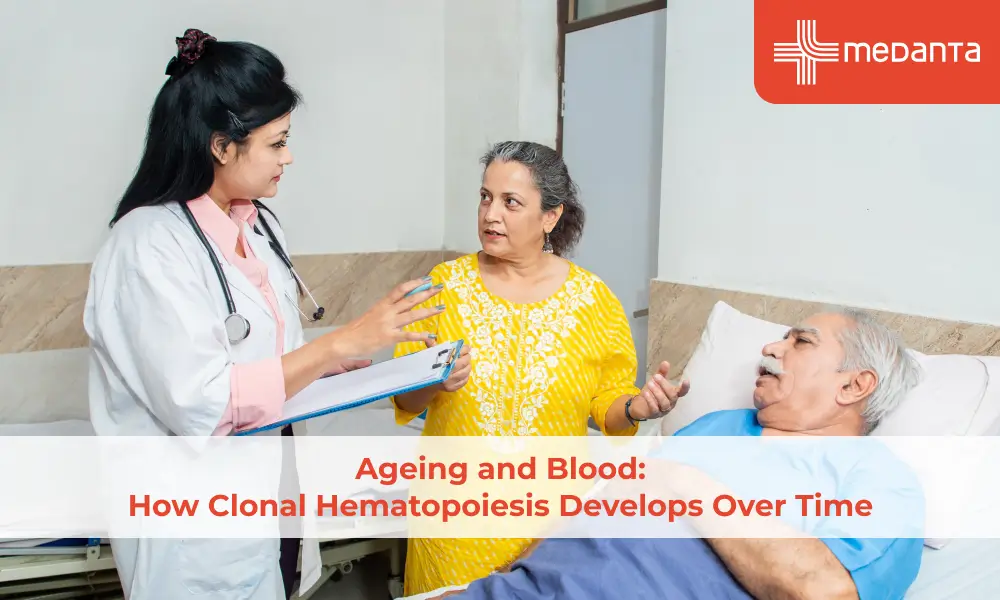Outlive Liver Cancer with Early Treatment
Liver cancer is a serious and potentially life-threatening condition that affects millions of people around the world. According to the American Cancer Society, liver cancer is the fifth most common type of cancer worldwide and the third leading cause of cancer-related deaths.
However, the good news is that liver cancer is often treatable, especially when it is detected early. In this blog post, we will discuss the liver cancer types, liver tumour, the cause of liver cancer, liver cancer treatment, and liver cancer survival rate.
Liver Cancer Types
The two main liver cancer types: Primary liver cancer and secondary liver cancer. Primary liver cancer, also known as hepatocellular carcinoma (HCC), is the most common type of liver cancer. It starts in the cells of the liver and can spread to other parts of the body. Secondary liver cancer, also known as metastatic liver cancer, is when cancer cells from another part of the body, such as the colon or breast, spread to the liver.
The symptoms of primary and secondary liver cancer can be similar and include abdominal pain, jaundice, weight loss, and fatigue. Treatment options for primary and secondary liver cancer may vary depending on the stage and severity of cancer.
Liver Tumour
A liver tumour is a mass or growth that develops in the liver. Liver tumours can be benign (non-cancerous) or malignant (cancerous). Benign liver tumours, such as haemangiomas and adenomas, are usually harmless and do not require treatment. Malignant liver tumours, such as hepatocellular carcinoma and cholangiocarcinoma, can be life-threatening if left untreated.
The symptoms of a liver tumour can include abdominal pain, nausea, vomiting, and weight loss. Risk factors for liver tumours include chronic liver disease, such as cirrhosis, and hepatitis B and C infections. Lifestyle factors, such as obesity and smoking, can also increase the risk of developing liver tumours.
What’s the Primary Cause of Liver Cancer
Liver cancer is a complex disease that can have multiple causes. Understanding the risk factors and causes of liver cancer can help individuals take steps to prevent the disease and reduce their risk of developing liver cancer.
- Chronic Liver Disease: This is one of the most common causes of liver cancer. Chronic liver disease can cause inflammation and scarring of the liver, which can lead to liver cancer over time. Chronic liver disease can be caused by several factors, including chronic hepatitis B and C infections, alcoholic liver disease, and non-alcoholic fatty liver disease.
- Hepatitis B and C: Chronic hepatitis B and C infections are major risk factors for liver cancer. These infections can cause inflammation and scarring of the liver, which can lead to liver cancer over time. Hepatitis B and C are transmitted through contact with infected blood or bodily fluids, such as through shared needles or unprotected sex. Vaccination and early treatment of hepatitis B and C infections can reduce the risk of developing liver cancer.
- Alcohol Consumption: Excessive alcohol consumption over time can lead to alcoholic liver disease, which is a major risk factor for liver cancer. Alcohol can cause inflammation and scarring of the liver, which can increase the risk of liver cancer. Limiting alcohol consumption or avoiding it altogether can help reduce the risk of developing liver cancer.
- Non-Alcoholic Fatty Liver Disease: Non-alcoholic fatty liver disease (NAFLD) is a condition where fat accumulates in the liver. NAFLD can progress to non-alcoholic steatohepatitis (NASH), which is a more severe form of the disease that can cause inflammation and scarring of the liver. NASH can increase the risk of liver cancer over time.
Liver Cancer Treatment
Liver cancer treatment options vary depending on the type, stage, and location of cancer, as well as the patient's overall health. Treatment options for liver cancer may include surgery, radiation therapy, chemotherapy, targeted therapy, and liver transplantation. In some cases, a combination of treatments may be used to achieve the best outcome.
- Surgery: Surgery is often the preferred treatment for liver cancer if the tumour is small and has not spread to other parts of the body. The goal of surgery is to remove the cancerous part of the liver and surrounding tissue. This may involve removing a portion of the liver (liver resection) or removing the entire liver (liver transplant). Surgery is only an option for patients with good liver function and who are otherwise healthy enough to undergo the procedure.
- Radiation therapy: Radiation therapy uses high-energy X-rays or other types of radiation to kill cancer cells. Radiation therapy may be used before or after surgery to reduce the size of the tumour or to kill any remaining cancer cells. It may also be used as a palliative treatment to relieve symptoms such as pain and discomfort.
- Chemotherapy: Chemotherapy involves the use of drugs to kill cancer cells. Chemotherapy drugs may be given orally or intravenously. Chemotherapy may be used in combination with surgery, radiation therapy, or targeted therapy. Chemotherapy is often used in cases where cancer has spread to other parts of the body or where surgery is not an option.
Liver Cancer Survival Rate
Liver cancer survival varies depending on the stage and severity of the cancer, as well as the type of treatment received. According to the American Cancer Society, the overall 5-year survival rate for liver cancer is around 20%. However, when liver cancer is detected early, the survival rate can be much higher. In fact, the 5-year survival rate for localized liver cancer that has not spread outside the liver is around 31%.
The survival rate for liver cancer also depends on the underlying cause of cancer. For example, patients with liver cancer caused by chronic hepatitis B or C may have a lower survival rate than those with liver cancer caused by other factors.
Conclusion
Liver cancer is a serious condition, but early detection and treatment can greatly improve a patient's chances of survival. It is important to understand the risk factors for liver cancer, such as chronic liver disease, hepatitis B and C, and alcohol abuse, and to take steps to reduce these risks.
If you experience any symptoms of liver cancer, such as abdominal pain or jaundice, it is important to speak with your healthcare provider to get a proper diagnosis and start treatment as soon as possible. With the right treatment and care, it is possible to outlive liver cancer and enjoy a healthy and fulfilling life.
If you think you might be at risk of liver cancer, contact a Liver Specialist at Medanta Medicity Hospital today for a consultation!






